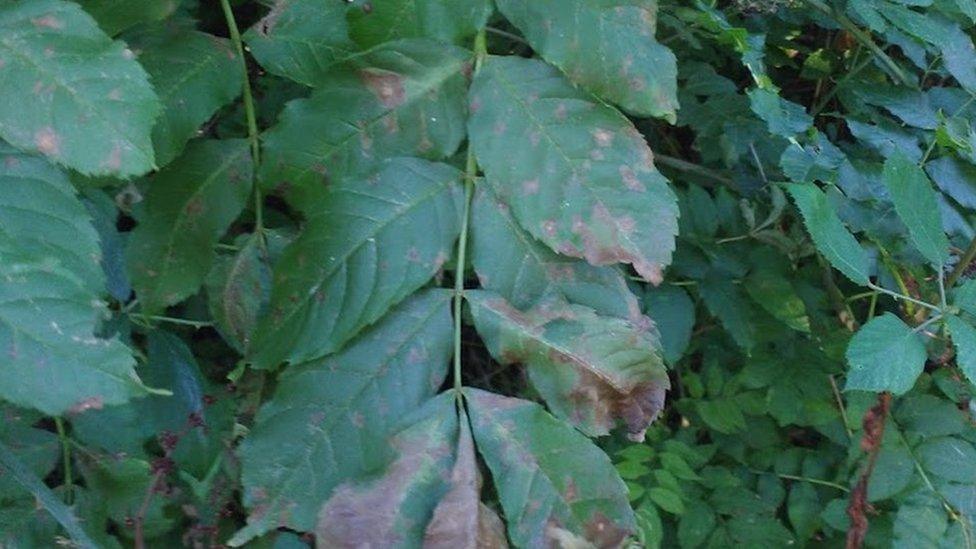Fresh saplings to restore disease-ravaged memorial
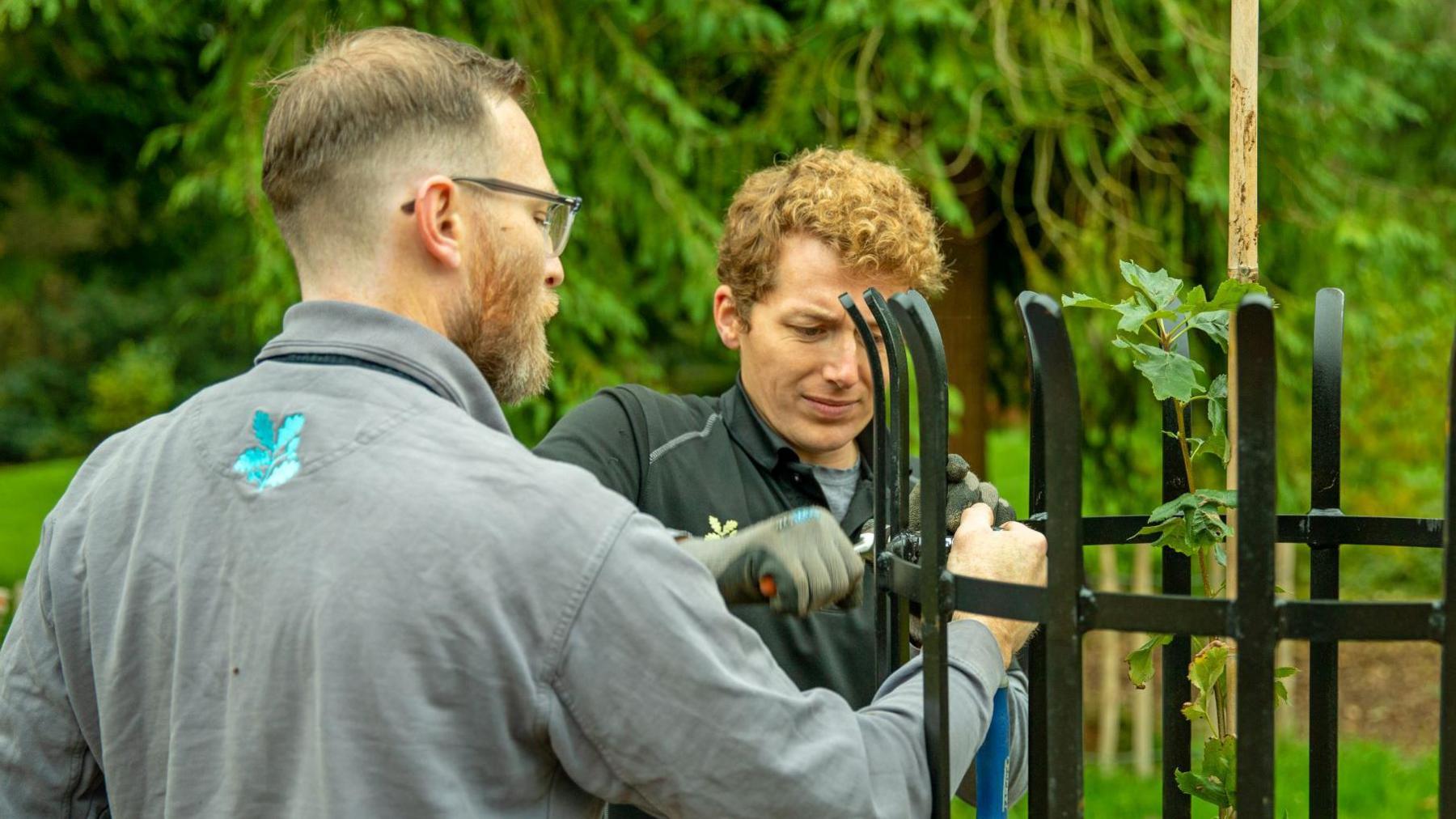
The National Trust has planted 12 saplings at Whipsnade Tree Cathedral to help it flourish
- Published
Work has begun to restore a tree-themed World War One memorial after it was devastated by a fungal disease.
Whipsnade Tree Cathedral, in Bedfordshire, was created from an array of trees, shrubs and plants to emulate the majesty of a place of worship.
However, a series of 86-year-old ash trees had to be felled earlier this year after they were weakened by ash dieback.
The National Trust said it has since planted 12 saplings to allow the cloister walk to flourish once again.
The tree cathedral, external was planted over nine years by Edmund Blyth and Albert Bransom, between 1930 and 1939.
New saplings planted at the site would be more resistant to disease and the changing climate, the National Trust said.
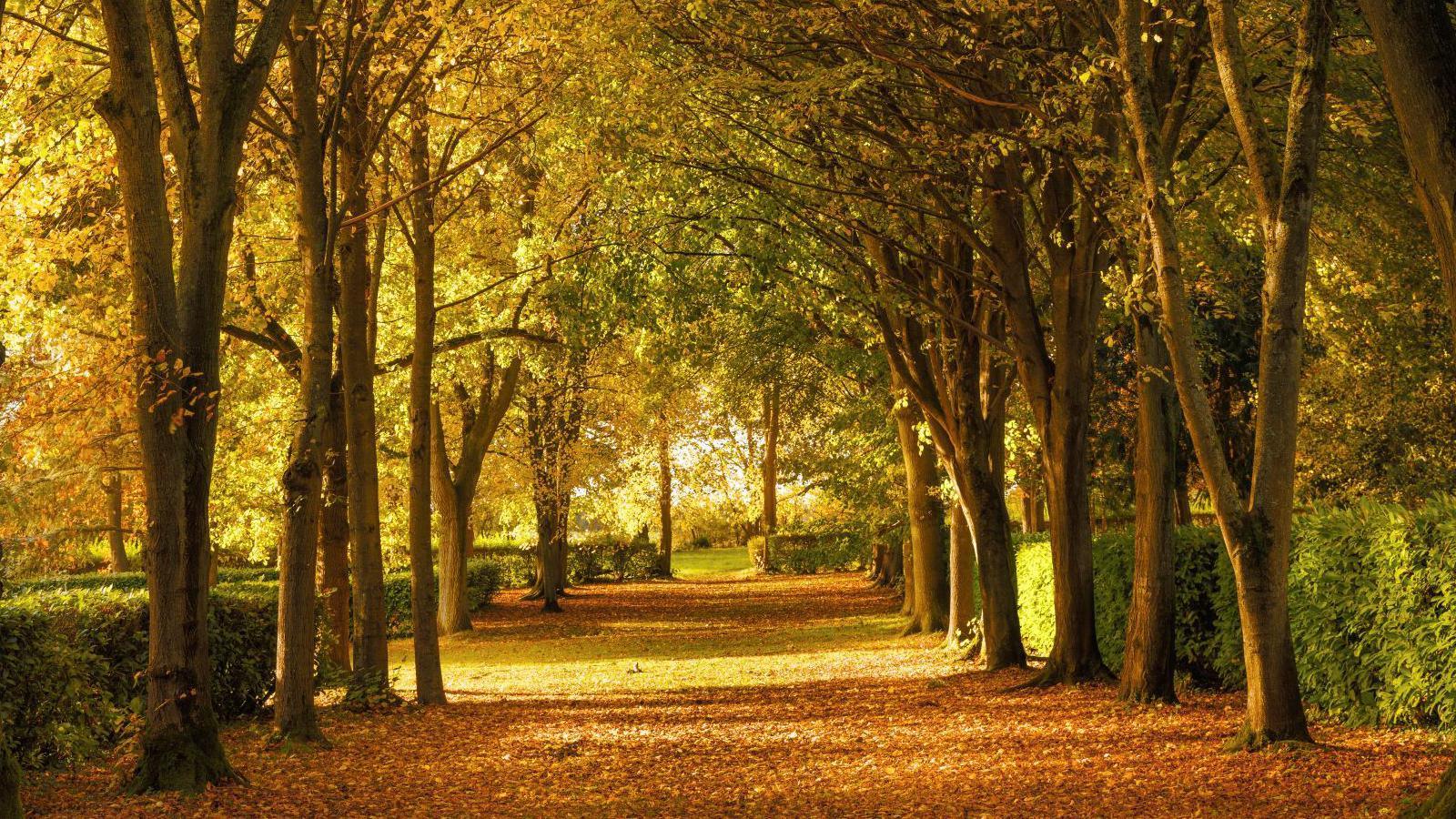
It is hoped the new saplings will provide a "beautiful blossom" in the spring
Paul Druce-Collins, a lead ranger at the trust, said the cathedral was an "exceptional place".
He explained the outbreak of ash dieback meant losing the ash trees was inevitable.
"Earlier this year, the infected trees were felled to make way for the more resilient species of wild service trees," Mr Druce-Collins added.
"They will grow to a similar size, shape and crown size as an ash tree, providing beautiful blossom in spring and vibrant colour in autumn."
Ash dieback, which was first seen in the UK in 2012, causes leaf loss and crown dieback and can lead to tree death.
It threatened to wipe out up to 80% of Britain's ash trees, the National Trust said.
Mr Druce-Collins said planting the saplings would enhance the cathedral's ecosystem, boosting biodiversity and attracting pollinators.
Get in touch
Do you have a story suggestion for Beds, Herts & Bucks?
Follow Beds, Herts and Bucks news on BBC Sounds, Facebook, external, Instagram, external and X, external.
Related topics
Related stories
- Published21 September 2024
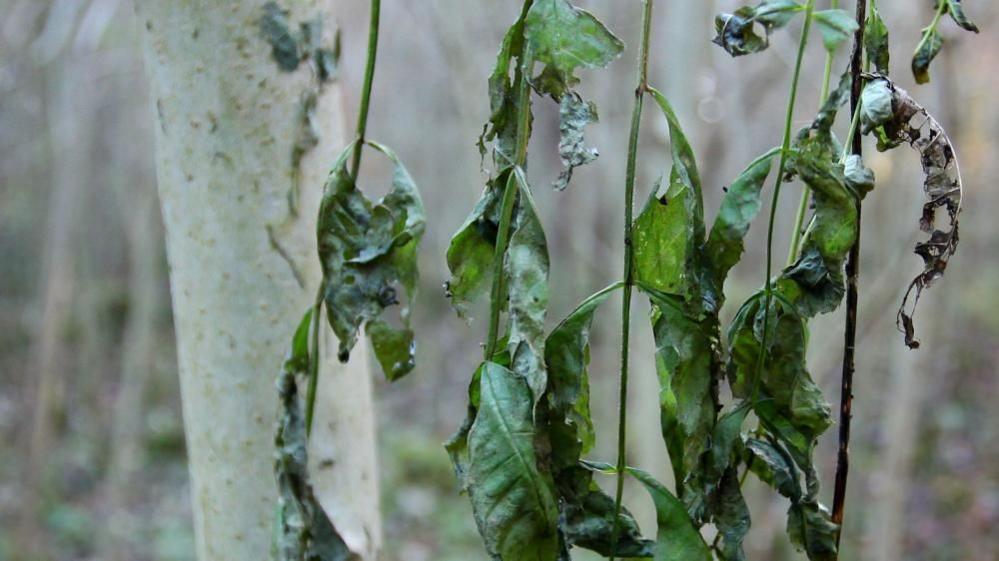
- Published15 April 2023
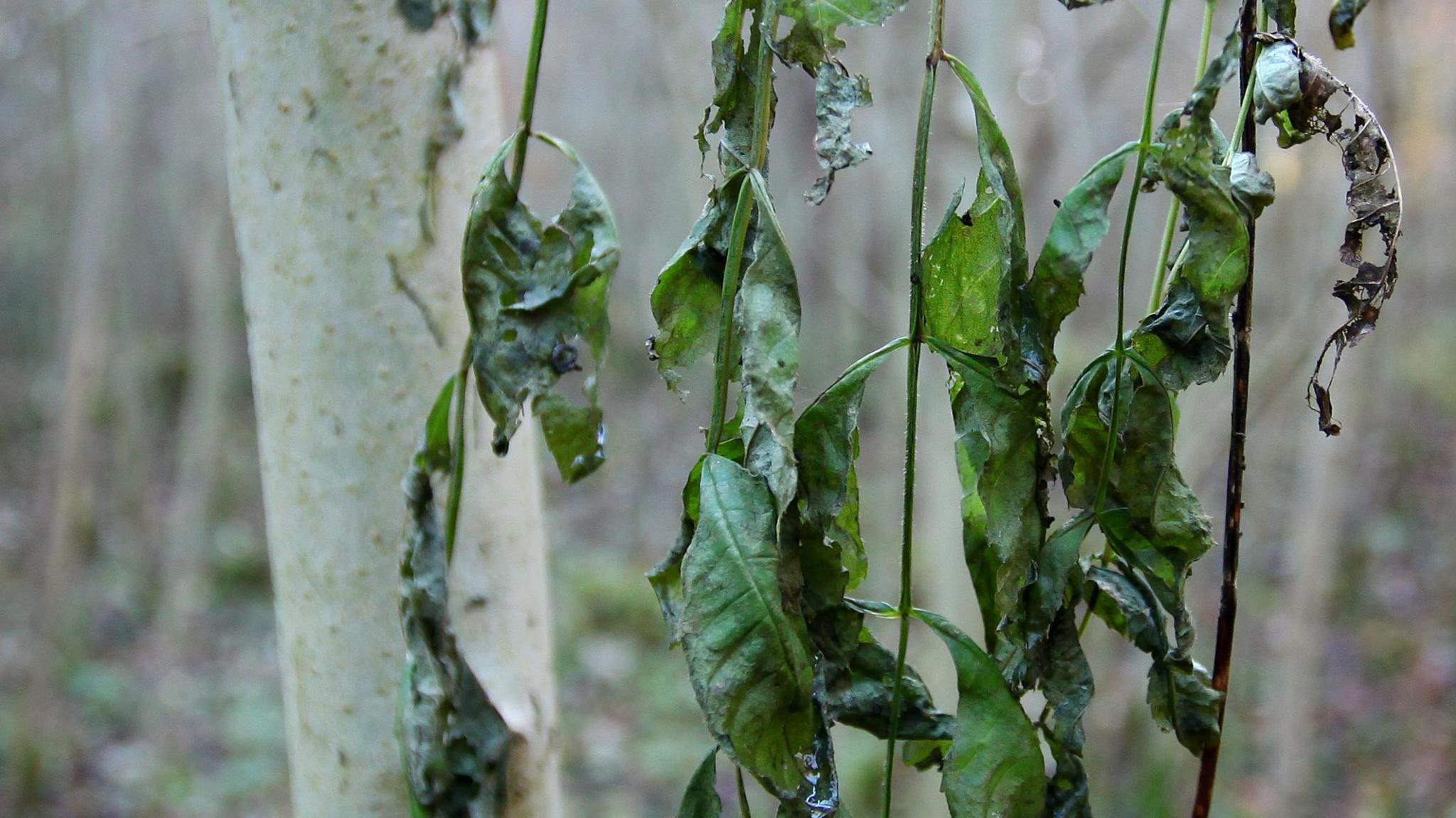
- Published28 October 2022
